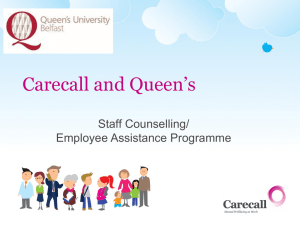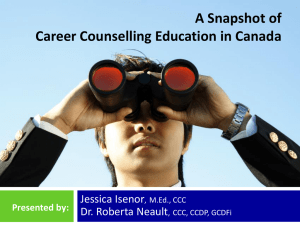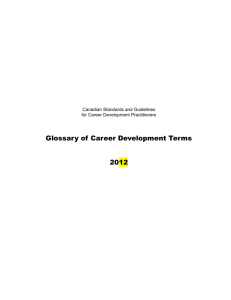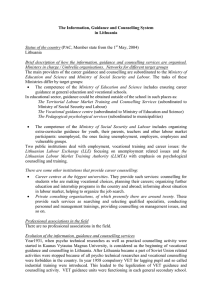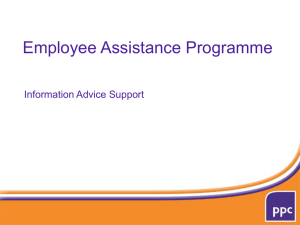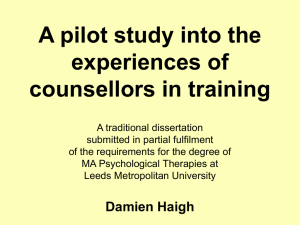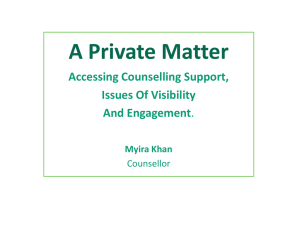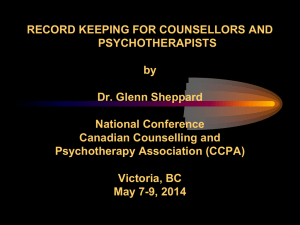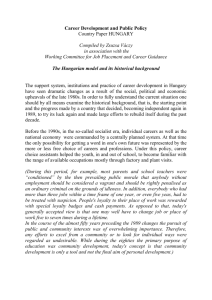Lifelong guidance in Finland
advertisement
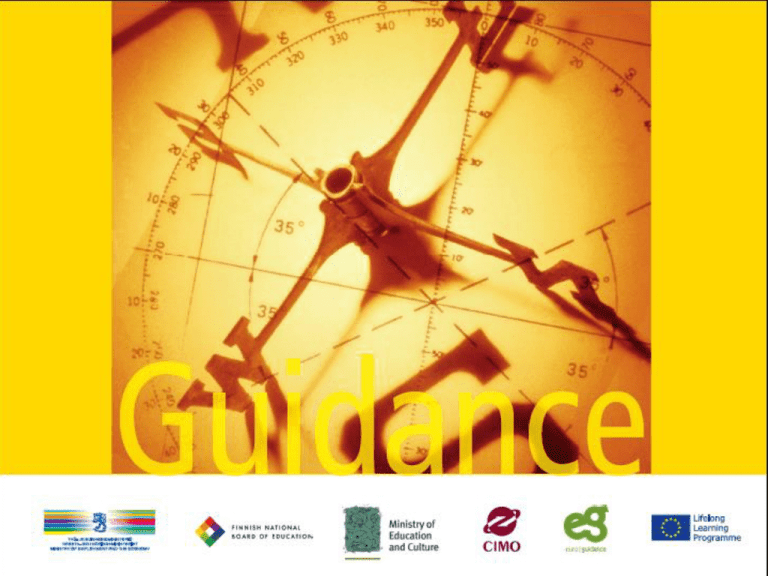
Context • 8,7 % unemployment rate (231 000) • long-term unemployed (at least one year) 67 500 • under 25 years old unemployed 37 900 (6 200 more than a year ago) • Youth guarantee http://www.nuorisotakuu.fi Youth Guarantee • • • • • Each person under 25 years of age, and recent graduates under 30 years of age, will be offered work, a work trial, or a study, workshop or labour market rehabilitation place within three months of registering as an unemployed jobseeker. Also includes an educational guarantee, which guarantees a study place for each young person finishing basic education. Key project of several ministries, call after new, innovative thinking Cross-sectoral cooperation: public employment offices, guidance counsellors in education, education institutes, social and health care providers, youth work and business community, also NGOs Focus on youth participation and own activity The characteristics of Finnish guidance and counselling services • Education and training of guidance professionals • Strong research base • Support from the policy-makers • PES and school system complement each other Training of guidance practitioners at schools • Master in Education, major in guidance and counselling + teacher qualification • Teacher qualification + 60 credits of guidance and counselling • Vocational teacher qualification + 60 credits of guidance and counselling • Multiform training available • In-service training provided within the field Secondary education • 99 550 applicants for secondary education (vocational 66 900 and upper secondary 32 650) • 86 500 available places, of which in vocational 47 700. • vocational most popular: 1. social and healh care, 2. business 3. transport and vehicles technics • 2012: 68 % of applicants accepted in vocational, in upper secondary 94% accepted Guidance at different educational levels • Pre-primary education • Basic education – Goals set by a national curriculum – Guidance counsellors at schools and class teachers – Class-based lessons in guidance and counselling at grades 7-9 Basic education (continues) – Special needs education and remedial instruction – Preparatory training for immigrants – Before and after school groups – Additional basic education (10th grade) – Preparatory training Secondary level education • General upper secondary schools – Goals set by a national curriculum – Guidance counsellors at schools and group advisers – Course in guidance and counselling Secondary level education • Vocational education and training – Guidance counsellors at schools, teachers and workplace instructors – On-the-job learning and skills demonstrations – Special needs education Higher education • Tertiary education divided into - Universities (academic, theoretical) – Polytechnics/Universities of applied sciences with strong labour market focus • Student counselling services • Study affairs secretaries or counsellors • Careers and recruitment services: Employment advisers and counsellors Adult education • Liberal adult education • General adult education • Vocational education and training for adults • Competence-based qualification • Work trials/try-outs Guidance and counselling at Public Employment Services (PES) • Centres for Economic Development, Transport and the Environment • Employment and Economic Development Offices • Labour force service centres In charge of guidance and counselling at PES • Employment advisers and counsellors • Education advisers • Vocational guidance psychologists • Higher education advisers • Rehabilitation advisers Training of guidance practitioners at PES • Vocational guidance psychologist needs a grade in psychology • Other practitioners have no formal qualification requirements • In-service training provided within the field What lies ahead? • Information and communication networks will become more important • Significance of guidance and counselling will grow • Ways and methods to give guidance and counselling will become more varied • Special focus on groups with special needs

